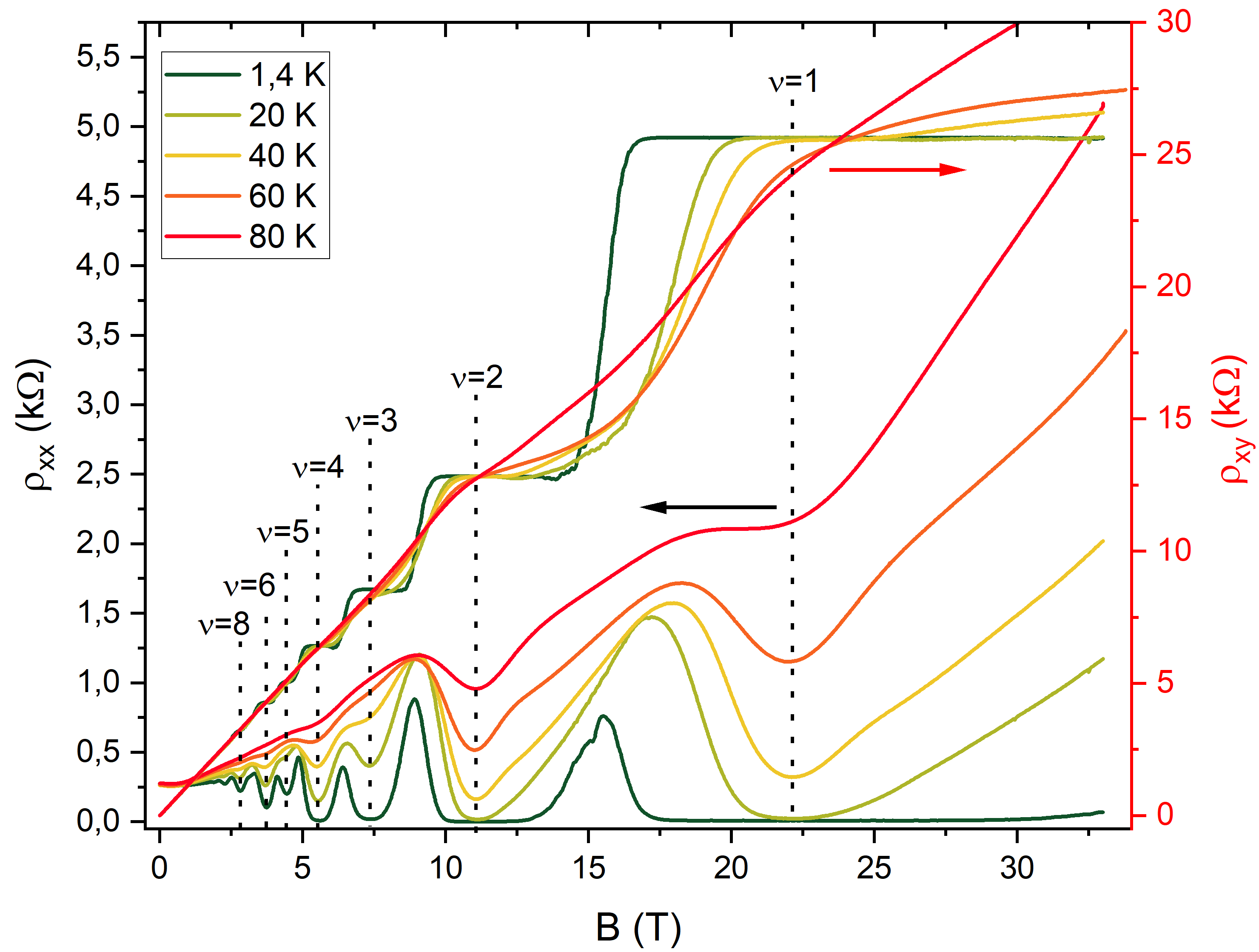Maurice Bal, HFML Nijmegen.
Since its discovery in 1980 by von Klitzing et al., the quantum Hall effect (QHE) has been measured in many different 2D systems, mainly at cryogenic temperatures. Currently, graphene is the only material that displays the QHE at room temperature (RT). Considering that the robustness of the QHE is, amongst others, governed by the Landaulevel spacing (about 2000 K at 30 T for graphene), InSb with its small effective mass (0.014m, with me the free-electron mass) would conceptually also be a good material for the observation of a RT QHE. Optimally alloying InSb with InAs can reduce the effective mass even further, by utilizing the band bending commonly observed in ternary III-V compound semiconductors.
Recently, a group of scientists from HFML-FELIX and ETH Zürich have investigated InSb and InAsSb modulation-doped quantum wells (QWs) to determine the robustness of the QHE in these systems. Temperature-dependent magneto-transport measurements show that the QHE survives up to 60 K (figure). Despite the fact that the QHE is observable at relatively high temperatures, our InAsSb QWs are still outperformed by graphene devices. A possible explanation can be found in the effective mass of the charge carriers. From the mass analysis, performed with two complementary techniques (the temperature dependence of Shubnikov–de Haas oscillations and cyclotron resonances), it can be concluded that the masses are larger than those of the corresponding bulk values, which can be attributed to the fact that asymmetric doping can skew the potential well, effectively reducing its width and resulting in a higher mass due to stronger confinement.
Using coincidence experiments in tilted magnetic fields, it was also possible to determine the g-factors, which are consistent with bandstructure calculations for InAsSb. Additionally, an interaction-induced enhancement of the g-factor is observed in both InSb as well as in InAsSb.
In summary, we have performed important proof-of-principle experiments on InAsSb quantum wells, a promising system with the potential of realizing a low mass and high g-factor system.

Figure: Magnetic-field dependence of ρxx and ρxy at different temperatures for an InAsSb QW Hall bar.
Quantum Hall effect in InAsSb quantum wells at elevated temperatures, M. E. Bal, E. Cheah, Z. Lei, R. Schott, C. A. Lehner, H. Engelkamp, W. Wegscheider, and U. Zeitler, Phys. Rev. Res. 6, 023259 (2024).
https://journals.aps.org/prresearch/abstract/10.1103/PhysRevResearch.6.023259
Contact: maurice.bal@ru.nl, uli.zeitler@ru.nl






